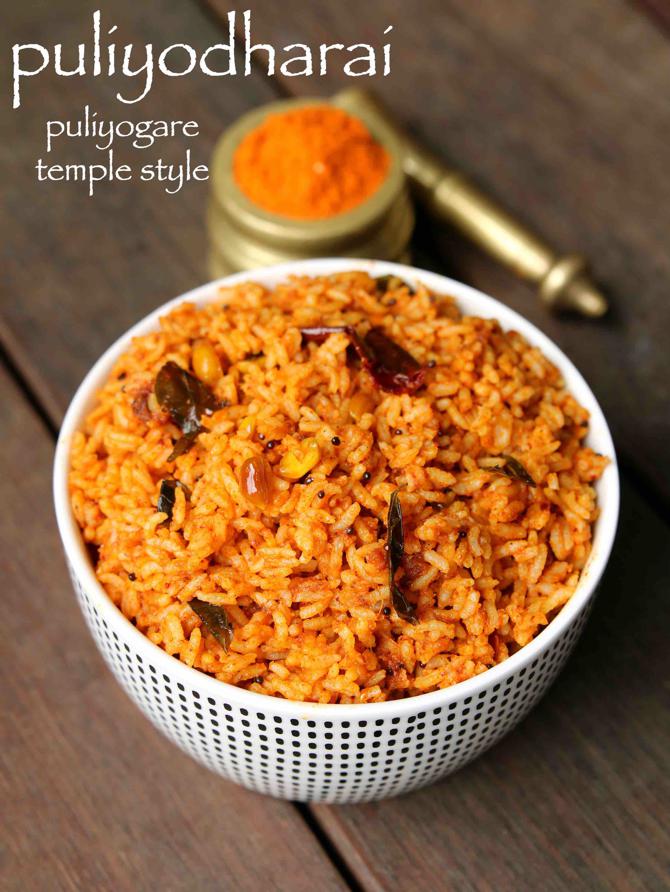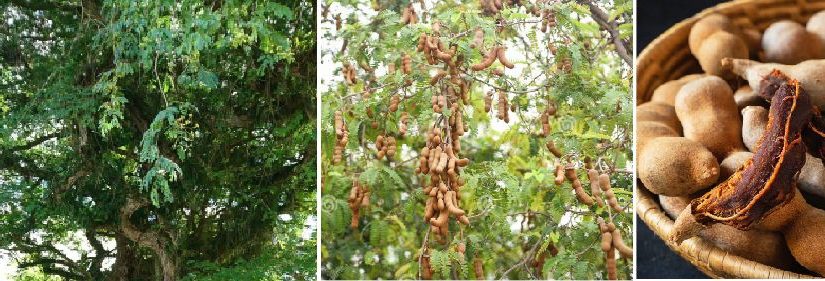The tamarind tree and the sweet fruit of the tamarind… delicious, also with medicinal properties. Food for fatty liver and other things!
By Tara Narayan
Eating is Fun / Eating is Yuck! – A variety food column
OH my goodness! All this I didn’t know about the fruit of the tamarind tree…never mind that I grew with a tamarind tree out in my old home town of Penang where there is or used to be in my 20s a grand tamarind tree out at the sea-fronting Esplanade and Fort Cornwallis’ ruins…we gang of girls used to come out here in the semi-wilderness then to raid the fruit of the tamarind tree…a treat of sweet-sour brown pulp. Even the green twisty pods were a delight for the tongue after duly rubbing in a bit of salt carried in a grubby paper envelop…I left Penang but that grand tamarind tree still lives in my memory! Life is like that only. I always remember trees which mean or meant something special to me.
So some 50 years later the tamarind tree is haunting me this week. That’s because a video points out to me that the fruit of the tamarind tree is a wonderful fat buster and the tonic for detoxing a liver in trouble. Fatty liver? Bile problems, overweight? Hey, eat more tamarind pulp or drink a tamarind sherbet or tamarind water in the morning and evening… it’s also a great laxative, tamarind pulp. You have to crack the ripe buff brown pods, scape out the reddish to brownish to blackish seeded pulp within, remove the seeds, soak the mass of pulp in water and do a bit of sieving.
Some folk boil the water and sieve before adding palm sugar or honey, diluting to taste, cooling and sipping. Enjoy on the rocks! Tamarind drinks are available in plenty out in Thailand and Vietnam and do lots of things with tamarind pulp – in chutney, sauce, drink and sweet. The to live for fruit salad snack of rojak comes tossed in tamarind rich sauce with other condiments added in…in India kids love to patronize the local vendor with his green tamarind pods amongst his cache of goodies on his mobile cart, along with other delights like feathery green saunf (aniseed, to live for), green mango, brownish boram, carambola or starfruit slices and so on…where have these vendors gone, one could find them outside schools.
But to stay with the good fruit of the tamarind or imli did you know it’s comes from a tree native to Africa? Tamarind or Tamarindus indica…could be native to India too and the tropical world. The tree with its itsy bitsy green leaves shiver so prettily in the wind and the leaves come tumbling down like so much confetti. There’s an old country saying that one may not sleep beneath a tamarind tree for its malafide airs are too unhealthy at night…may be too much release of carbon dioxide and nitrogen! Also, ghosts seem to love tamarind trees.
But listen up here. The fruit of the tamarind tree is said to be rich in polyphenols and antioxidants and anti-inflammatories and what more do you need to live happily ever after in the pink of health? This is say the velvety sour-sweet pulp of tamarind is rich in the B vitamins (panthothenic acid which is B5), thiamine which is B1 and niacin which is B3…it’s a vitamin C fruit too but don’t kill yourself with an overload of vitamin C. For some reason pregnant women have to stay away from the fruit of the tempting fruit of the tamarind although some pregnant women crave for it, well, only a little bit of it or something like that.
There’s also some vitamin E in tamarind and it’s said to be a cooling, astringent (kashaya) fruit in Ayurveda which prescribes it for its medicinal properties…like if you suffer constipation, eat some tamarind pulp in chutney or in pani puri water. I have a friend who when he feels terribly constipated goes out to a true blue chaat outlet to drink just a glass full of pani puri water which is also spiked with tamarind pulp! The next thing you know, he confides, he’s in the toilet and the job is as clean as a whistle. Come to think of it perhaps that’s why the chaat numbers of pani puri and bhel puri and samosa chaat and dahi puri and sev batata puri, etc, are so popular in north India…besides being so damned chatpatti the long result is one feels lighter in the stomach. So, relish a chaat number daily!
HEALTH BRIEF
To return to the health brief of rejoicing in the fruit of the tamarind my latest findings tell me that eating tamarind may eliminate 20 years of my life and I’d be back in my youthful 40s…but that’s because tamarind pulp is well researched now and it’s out that it’s a great liver cleanser. In other words it keeps your liver young and therefore you stay young too, for isn’t the liver the headquarters of most every organ in body beautiful? Everything good, bad or ugly you put in your mouth has to end up in the liver to deal with joyously or angrily! Oh, an angry liver can certainly take its revenge on you for when it’s in bad shape our life extension is more or less numbered…so most important to love your liver.
My advice this week is think tamarind in all the ways you can. Amongst other things I believe it regulates lipid metabolism and that means yes, you may lose weight by including more tamarind in your diet. It makes for good HDL, stored fat here and there hates it because naturally it doesn’t want to budge – and has become as lazy and frustrated as me before a computer all day long.
But friends I’m investing in the freshest tamarind stock which has come into the Panaji early morning gauti market, gauti means organic of course. If I start now I dare say I’ll look 20 years younger in another 20 years…dear mahadeo give me back my youth so that I may run away from life’s boredom! Madam Imli anyone? For a start one may take two handfuls of imli pulp in a liter of water and bring to a boil. Fifteen to 20 minute boil or less as you like it. Cool, sweeten with honey or jaggery syrup, and sip first thing in the morning and evening at teatime. Forget the tea. The Arabs used to call the tamarind tamar-e-hind and to add a final note here tamarind pulp makes many a sauce, chutney, curry and sherbet come alive with that je nais quoi magic…so go adventure with it or have an affair with it of the very exciting kind. I mean befriend it anew in case you’ve forgotten about what a fruit of substance the tamarind is! Substance also, style also. Tamarind pods green and brown look like ballerinas swaying in the wind amidst the teeny weeny flurry of leaves of the tamarind tree!
Tamarind, star ingredient in south Indian dishes….

Tamarind redolent rasam, even usual coconut chutney which comes with idli and dosa comes alive with a dash of tamarind in it, and of course an all-purpose sweet tamarind sauce!
THINK tamarind and so many dishes from down south India sweep into the mind! Beginning with the thick veggie rich sambar of tur dal swirling in sour notes of tomato or tamarind (which deepens color but offers a delicious full bodied mellow flavor); there’s the thin consommé-styled rasam too comes flavored with ginge, lemon, black pepper, tamarind juice – can clear sinuses through to ease breathing anew!
Amongst the many rice dishes of southern cuisines apart from sambar-rice, rasam-rice, tomato-rice, brinjal-rice, lemon-rice, curd-rice, who can forget tamarind or puliodharai, exclusively tamarind rice? Pulliodharai’s tamarind sour tang is distinctive and popular that even the MTP people have put out a readymade pulliodharai masala to stir-fry in a little cold-pressed gingerly oil (sesame seed oil) and mix into cooked rice to arrive at an instant pulliodharai dish of the most scrumptious kind… to be washed down with what else but a tart buttermilk (plain or given a phodni/tempering in bit oil, mustard seeds, curry leaves)?
Other tamarind recipes which come to mind are of course the north Indian chaat recipes; in Thailand there is pad thai and I remember once eating an apple-tamarind chutney; Agua Fresca is mostly just a fresh fruit puree blended in water and served on the rocks – tamarind paste is one of the fruit flavors which lends sweetishness. HP sauce is a tamarind sauce used in European recipes…in India most Gujarati homes are fond of having a tamarind-jaggery sauce on stand-by to be drizzled atop dahivada or mixed in a chaat snack; ditto for the Punjab where tamarind sauce features atop tikki and kababs. Add ginger powder or sonth to this tamarind sauce and it becomes chutney to lace with any roti.
This is to say myriad the health benefits of tamarind! In Thailand there is a belief that eating tamarind eliminates worms; it’s cooling properties bring down blood pressure, lower blood cholesterol…tamarind has a HCA compound which reportedly inhibits an enzyme that specifically helps store fat in body beautiful! So get familiar with tamarind if you haven’t already from now onwards. Most of us need tamarind in our life!
Puliyodharai recipe

other ingredients: 2 tbsp sesame oil; 1 tsp mustard (rai); ½ tsp urad dal; ½ tsp chana dal; 2 tbsp peanuts (roasted); 1 dried Kashmiri red chilli (broken); few curry leaves; pinch of asafoetida (hing); 1 cup tamarind extract; ¼ tsp turmeric (haldi); ½ tsp jaggery (gud); 1 tsp salt; 3 cups cooked rice
preparation: 1. Heat 1 tsp gingelly oil and roast spices. 2. Roast 1 tbsp sesame seeds till it turns golden brown. 3. Blend to fine powder and puliyodharai masala powder is ready. 5. In a large kadai heat 2 -3 tbsp gingelly oil. 6. Add in 1 tsp mustard, ½ tsp urad dal, ½ tsp chana dal and 2 tbsp peanuts. saute till mustard seeds splutter. 7. Add 1 red chill, few curry leaves and pinch of hing. saute for few seconds. 8. Add 1 cup tamarind juice, ¼ tsp turmeric, ½ tsp jaggery and 1 tsp salt. 9. Mix well and boil the mixture for 10 minutes or till oil separates. 10. Add 2-3 tbsp of prepared puliyodharai masala powder. 11. Continue to cook till the oil separates from sides. 12. Now add 3 cup cooked rice and mix gently.
(This is puliyodharai temple style!)
